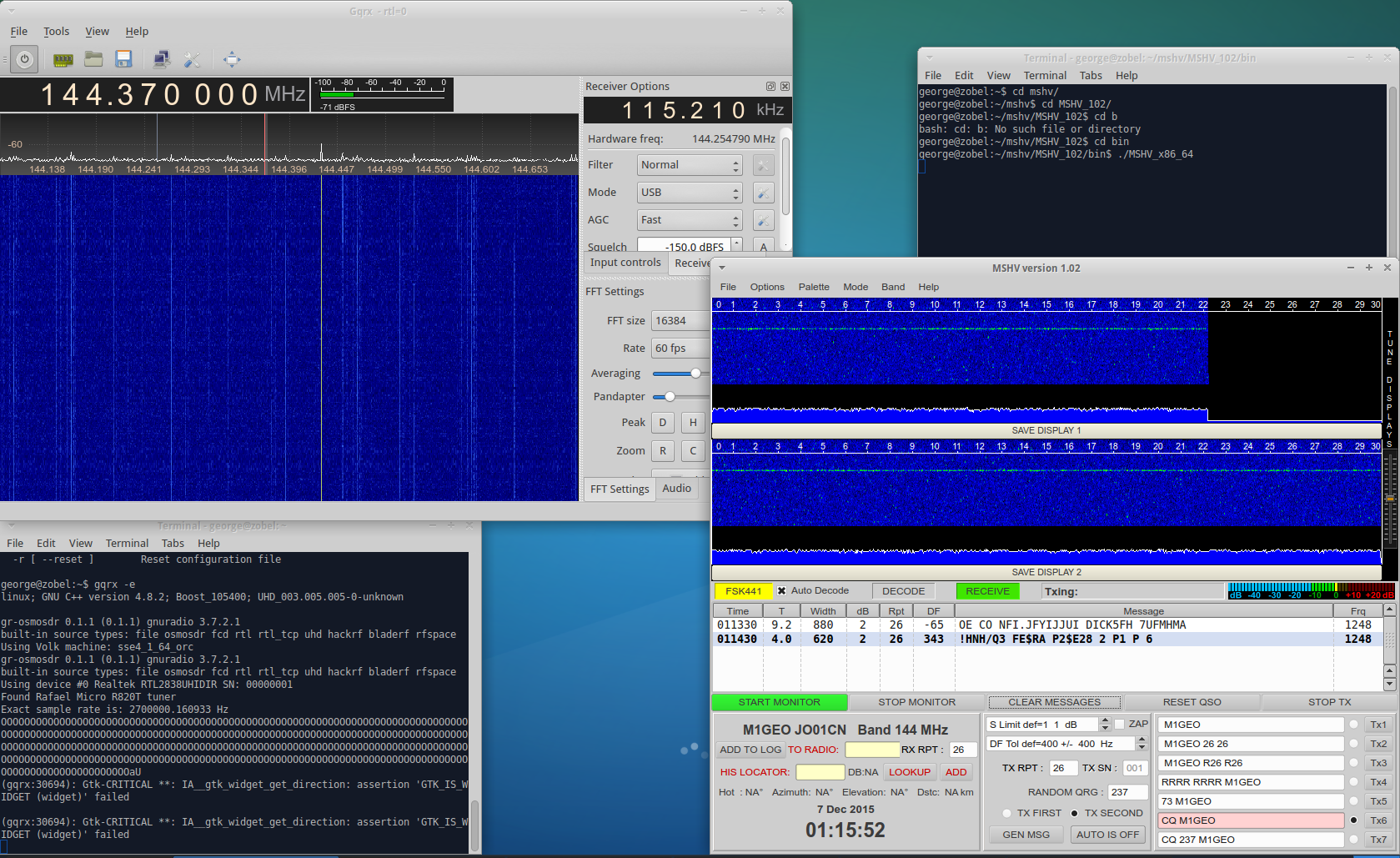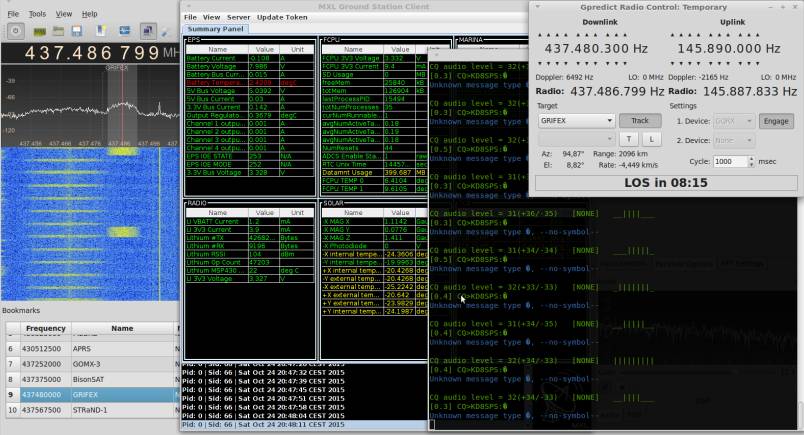Tudor Vedeanu has posted a nice video showing the Airspy HF+ and Gqrx running on the Raspberry Pi 3 and using what appears to be a 7 inch touch screen.
Continue reading “Airspy HF+ and Gqrx running on Raspberry Pi”
Open source software defined radio by Alexandru Csete OZ9AEC
Developer blogs about gqrx.
Tudor Vedeanu has posted a nice video showing the Airspy HF+ and Gqrx running on the Raspberry Pi 3 and using what appears to be a 7 inch touch screen.
Continue reading “Airspy HF+ and Gqrx running on Raspberry Pi”
YouTube user Chris D has posted a video showing Gqrx in action on his Raspberry Pi equipped with the 7″ touch screen. Chris uses an rtl-sdr dongle with what appears to be a home made upconverter.
Continue reading “[PI-SDR] Raspberry PI 3 + 7″ Touchscreen + RTL-SDR + GQRX”
Michael, DG0OPK has been doing a lot of experimenting with running Gqrx on various ARM boards. In this video below, he shows gqrx running on the latest Odroid C2 from Hardkernel, which has a 64 bit, 2 GHz quad-core processor.
Today it was brought to my attention that gqrx works well with the Red Pitaya board running the SDR transceiver code by Pavel Demin. Indeed, looking through the gr-osmosdr commit logs, I could see support was added in December 2015, just around the same time I was packaging gr-osmosdr.
Meteor scatter, or meteor burst communications, is a challenging field within amateur radio communication, where the operators use the ionized trails of meteors for reflection of radio waves.
George Smart, M1GEO, has posted a very nice write-up on his website describing the setup that he uses for meteor scatter reception. The setup uses an RTL-SDR dongle with Gqrx as receiver, and WSJT or MSHV for decoding.

Check out Meteor Scatter Reception on RTL-SDR.
Are you interested in receiving and decoding telemetry from amateur radio satellites? Then check out this excellent article by Jan PE0SAT called Unix TLM (Telemetry) decoding, where Jan gives a description of his setup.
In his Linux setup, Jan uses Gqrx as SDR front-end and Gpredict to track the satellites. As we wrote earlier, Gqrx has a Hamlib-compatible TCP interface so that we can use Gpredict to adjust the receiver frequency with Doppler corrections.

Jan also takes advantage of the Audio/UDP interface in Gqrx as well as the audio routing capabilities of modern Linux desktops to route the demodulated audio from Gqrx to external decoder applications.
All in all, this is a very nice setup that demonstrates well how Gqrx can be hooked up with external applications to get new functionality.
Work towards gqrx 2.3 continues although not as fast as I wish. If you grab a snapshot from the git repository you will notice a few improvements. Continue reading “Analog bandwidth, named gain stages and a few UI tweaks”
You may have heard rumors about people using Gqrx with the Funcube Dongle Pro+. Well, it is true: There is now official support for the Funcube Dongle Pro+in Gqrx without the need for any ugly hacks. Continue reading “Gqrx with Funcube Dongle Pro+ support”
As gqrx is becoming more and more popular with a growing user community, I have decided that it was time to give it its own website using the the https://www.gqrx.dk/ domain. Continue reading “New website, new blog”